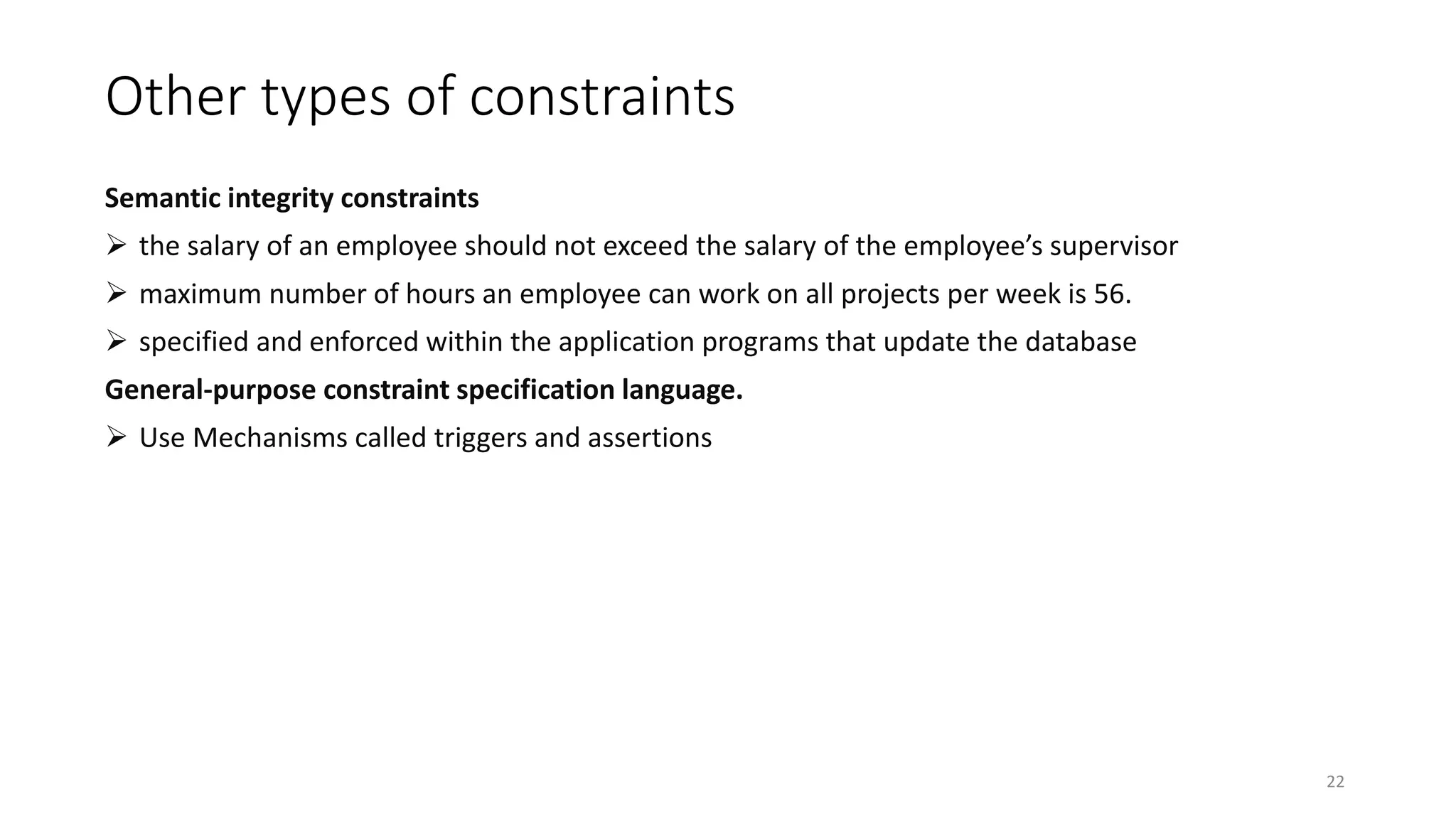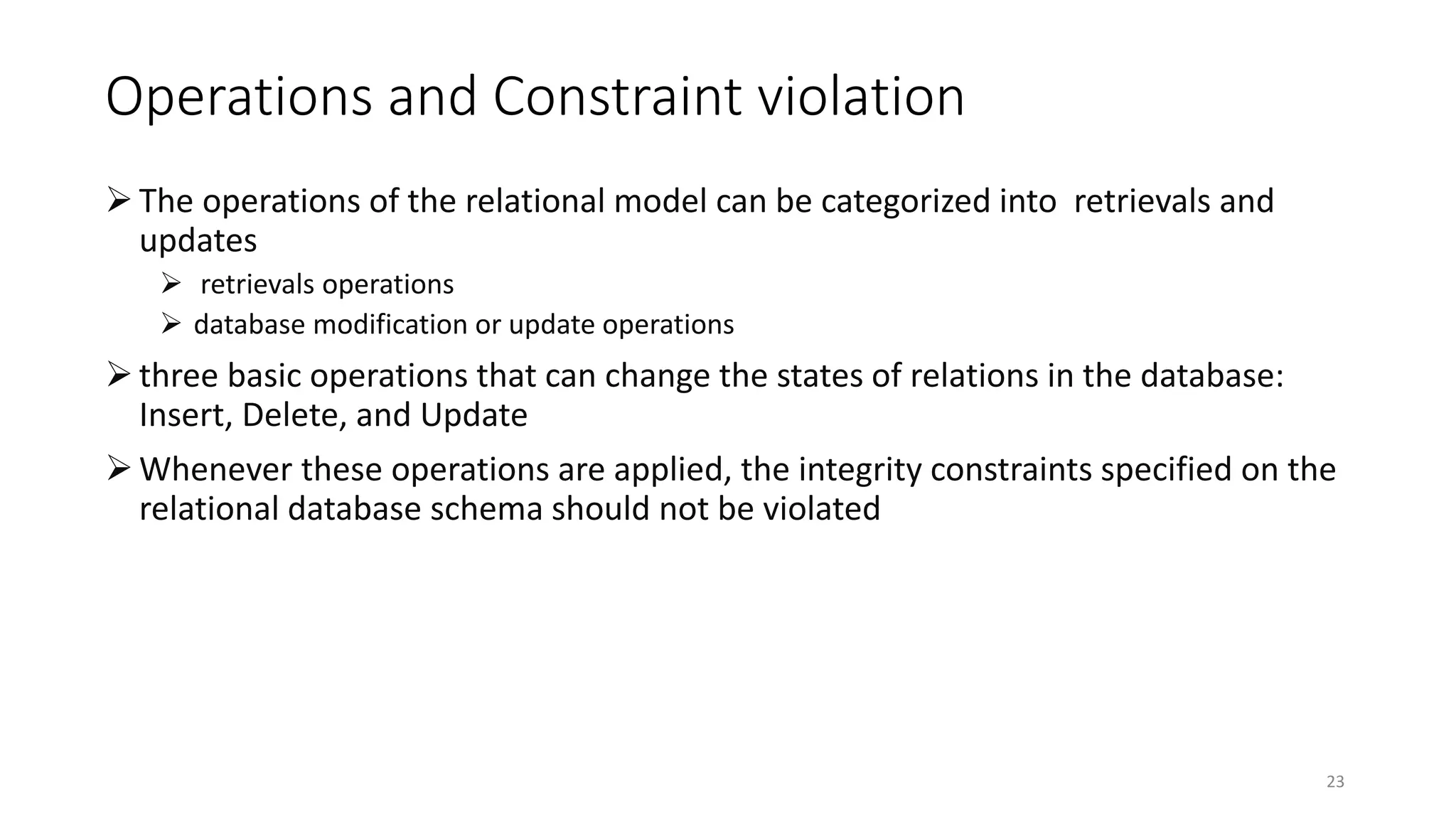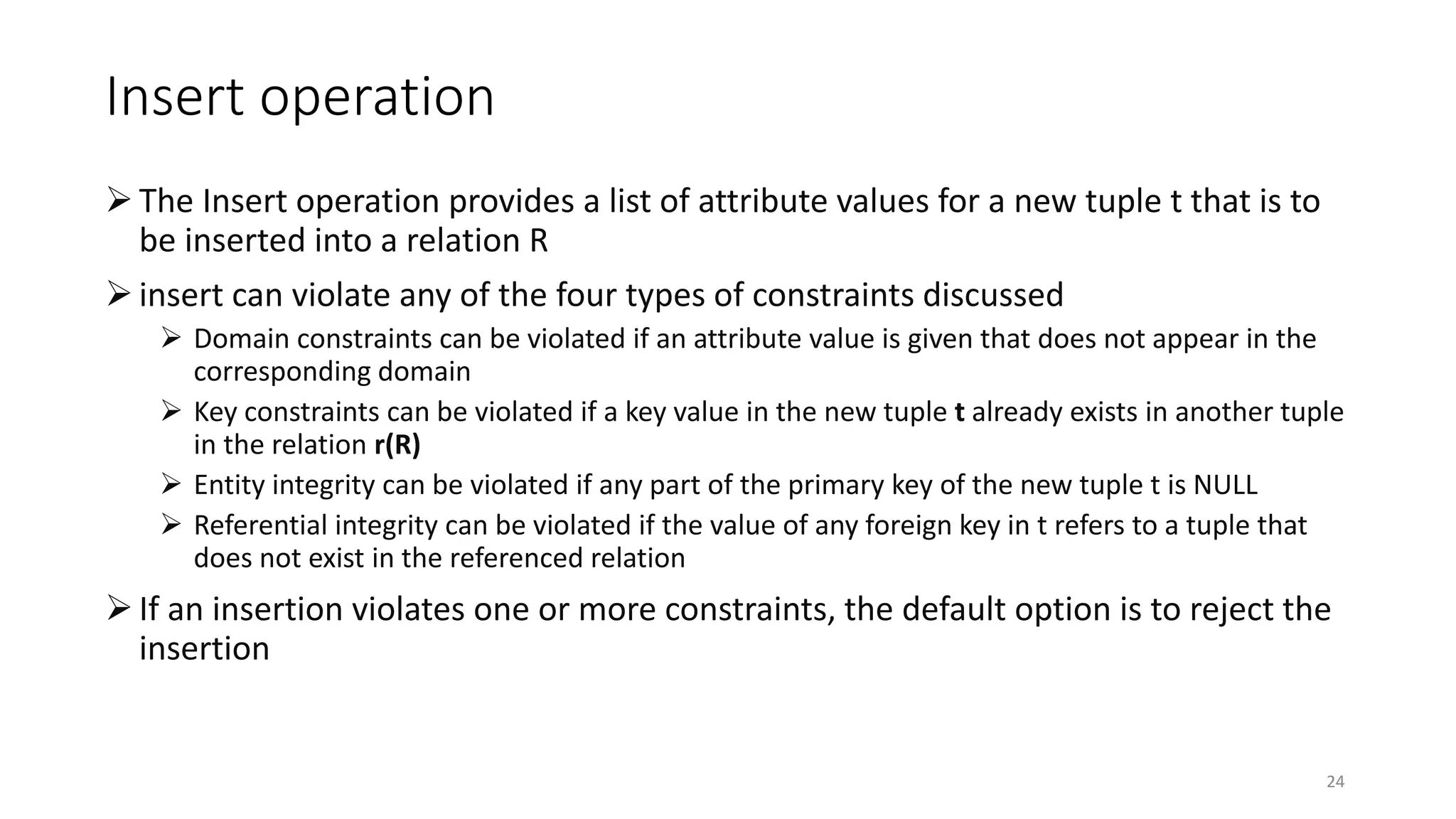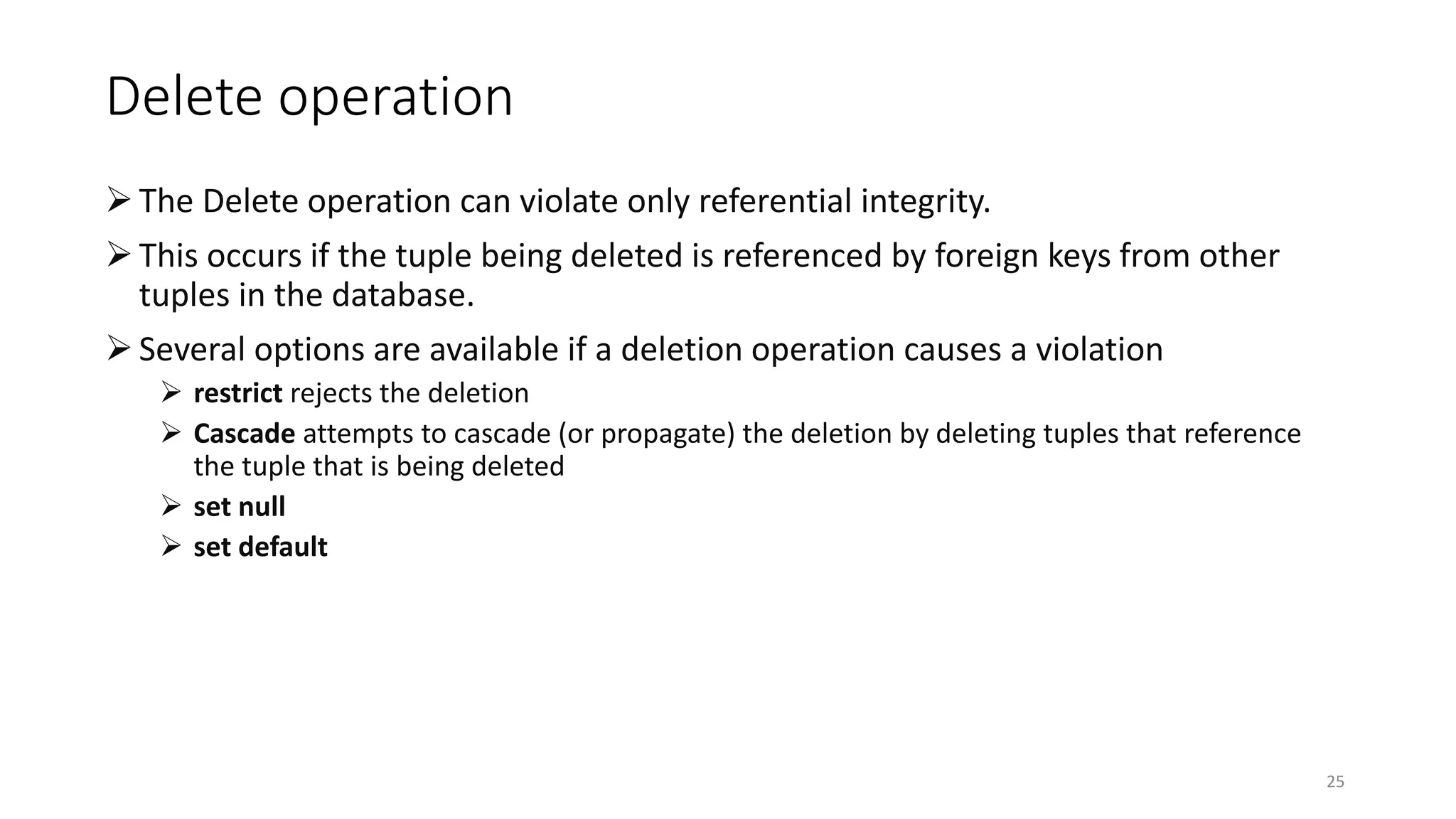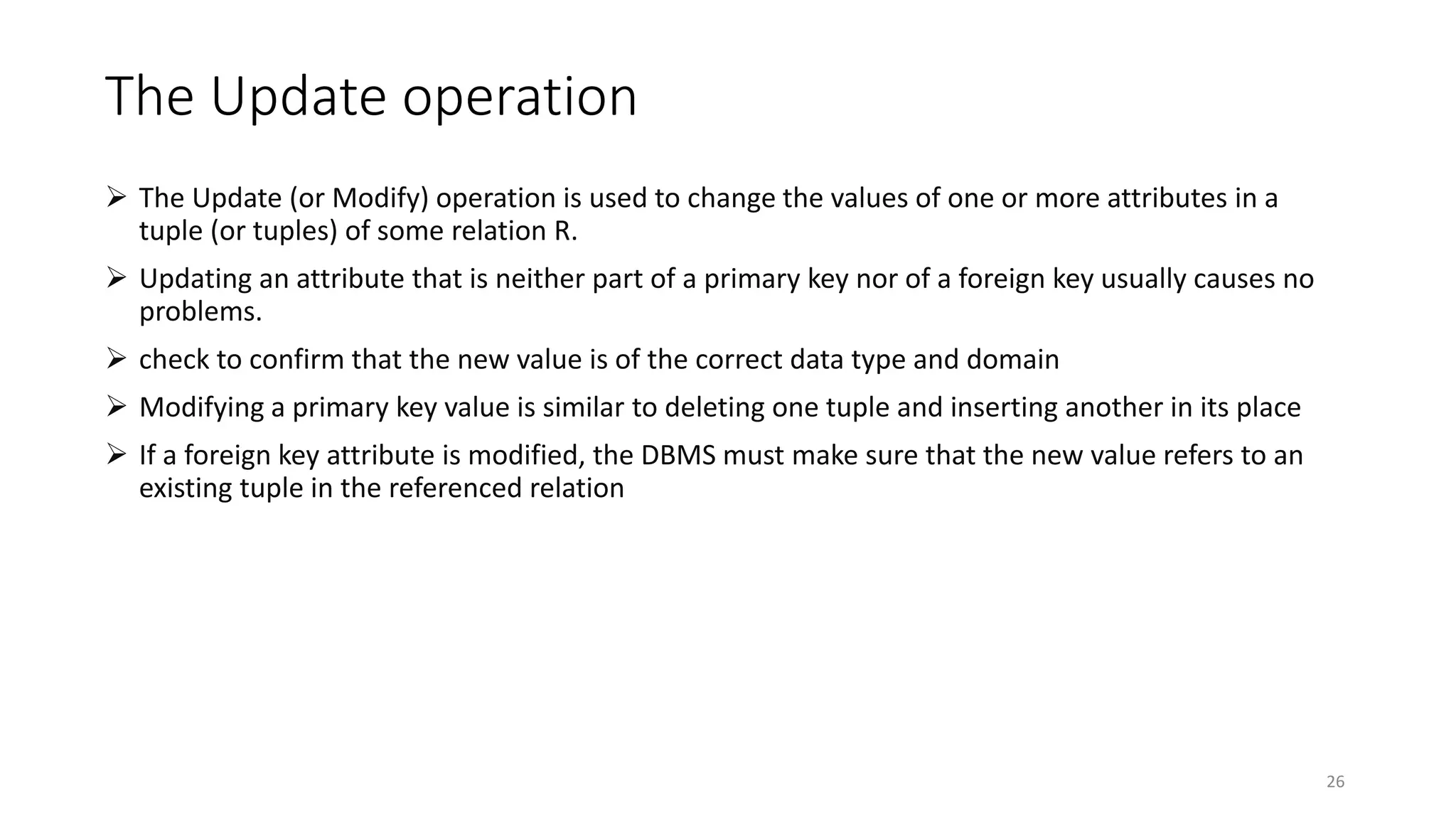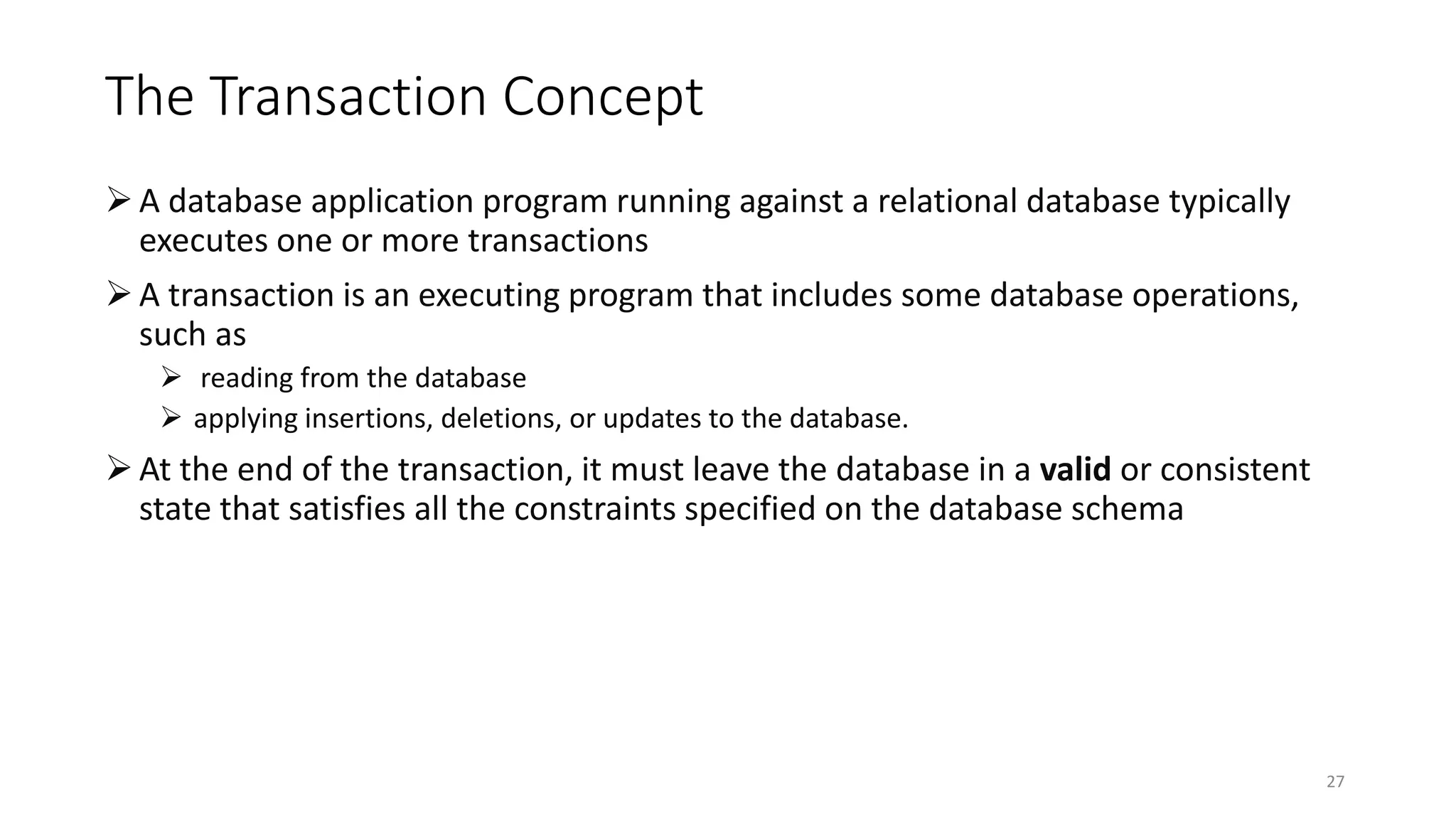The document provides an overview of fundamental concepts related to relational database systems, including relational data models, domains, relation schemas, and various types of constraints such as key, domain, and referential integrity constraints. It details the operations that can be performed on databases, such as insert, delete, and update, along with the potential violation of constraints that may occur with these operations. Additionally, it emphasizes the importance of maintaining database integrity through specified rules and application-enforced constraints.
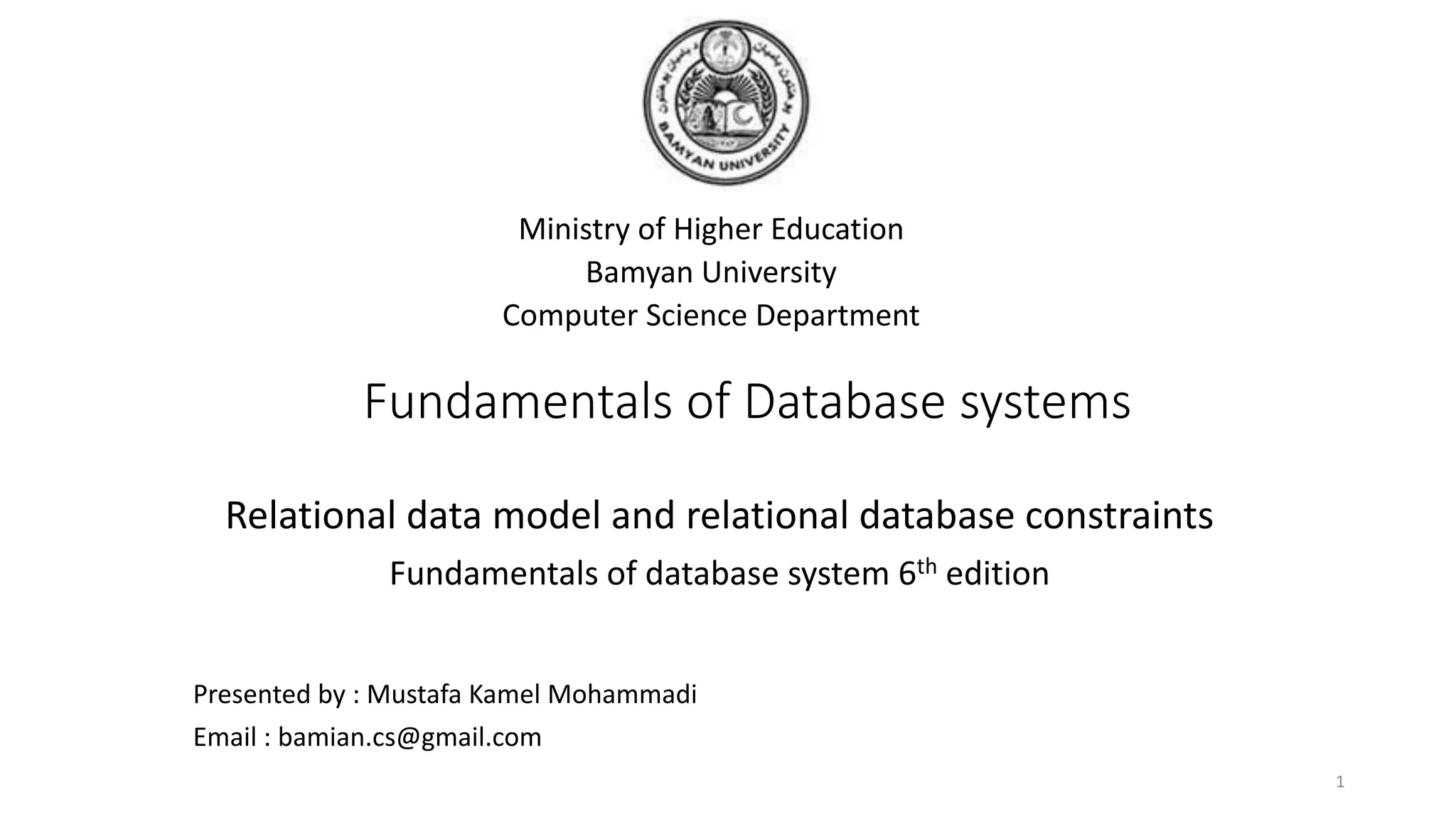

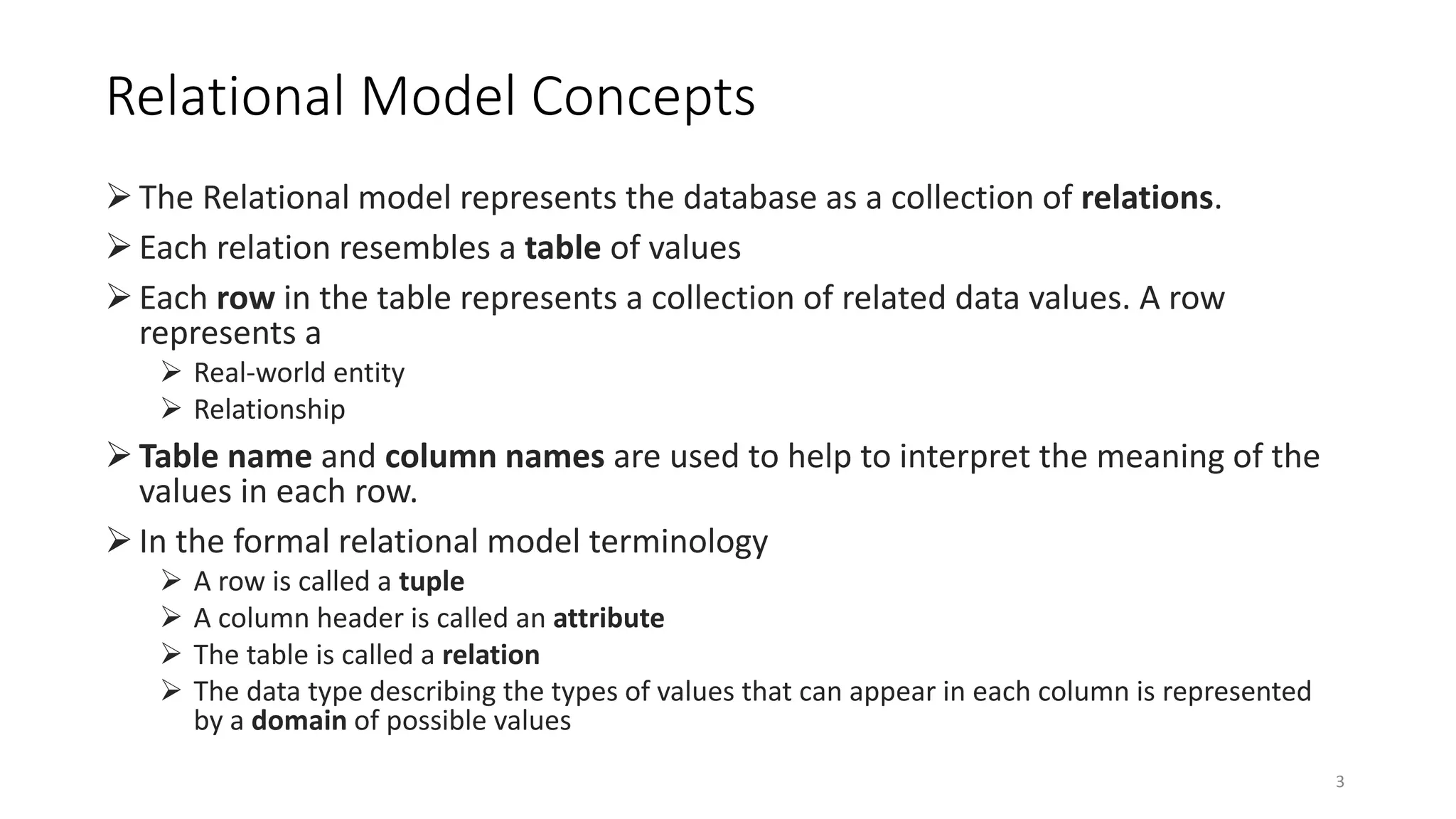
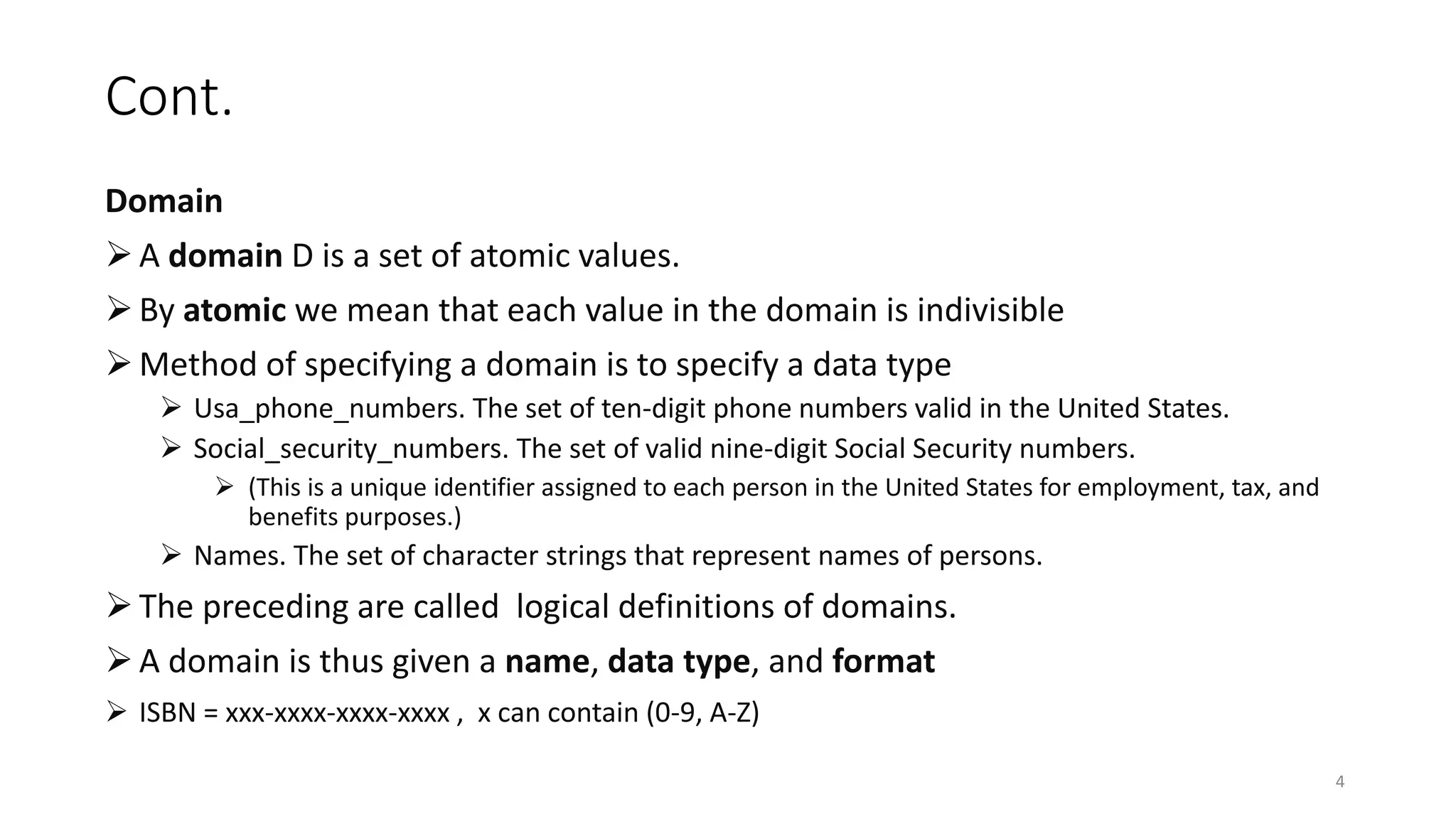
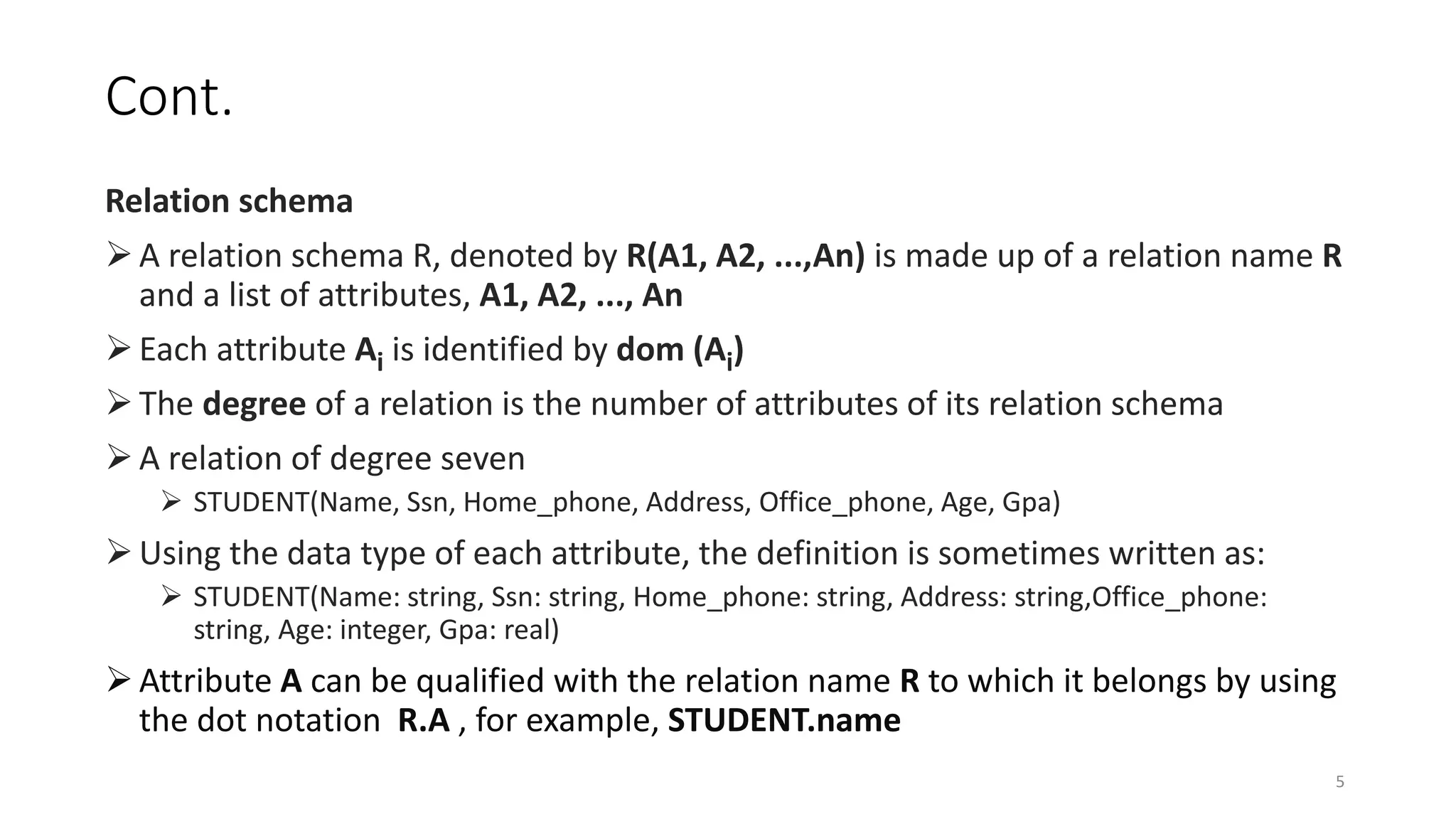
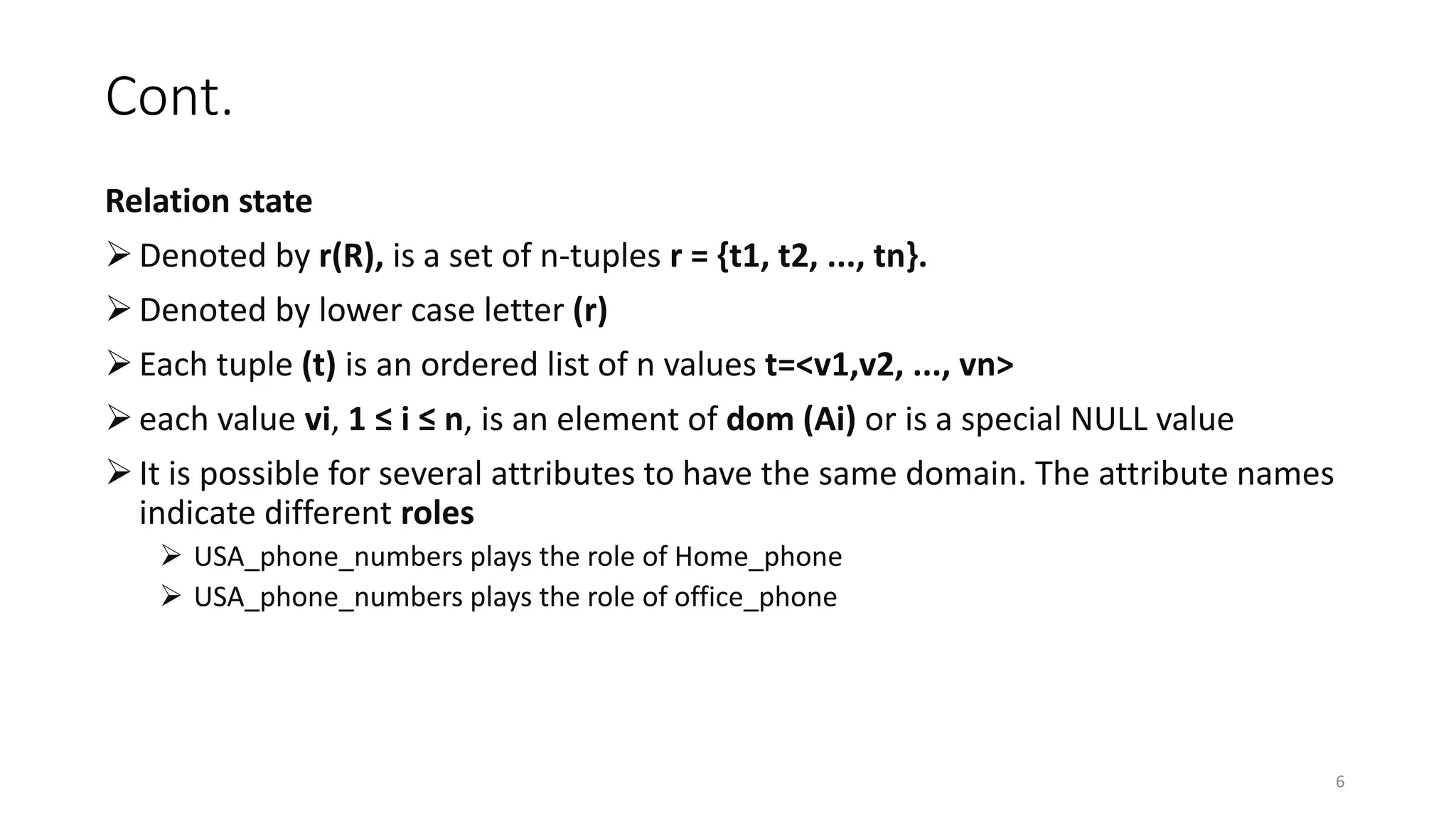

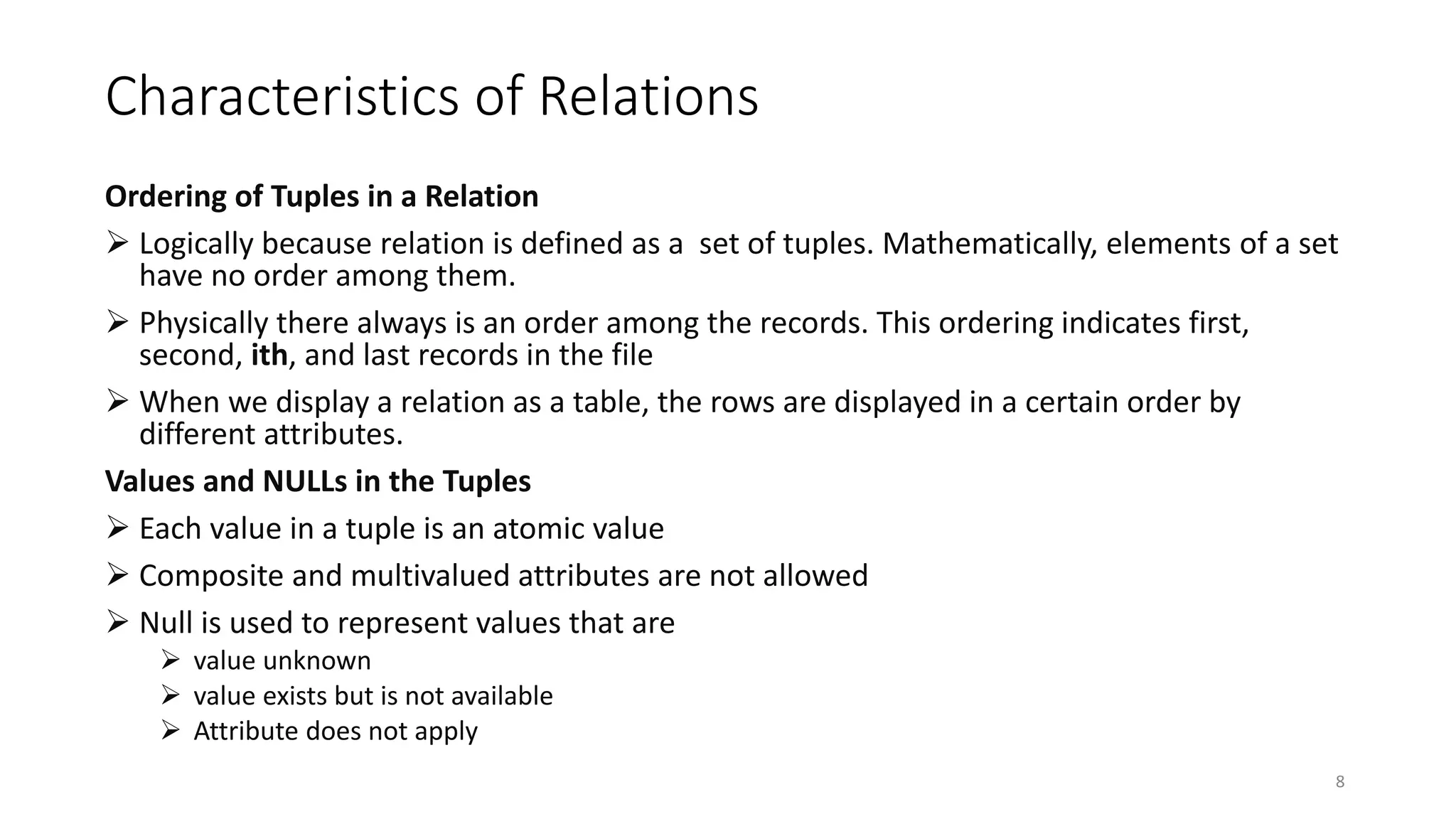
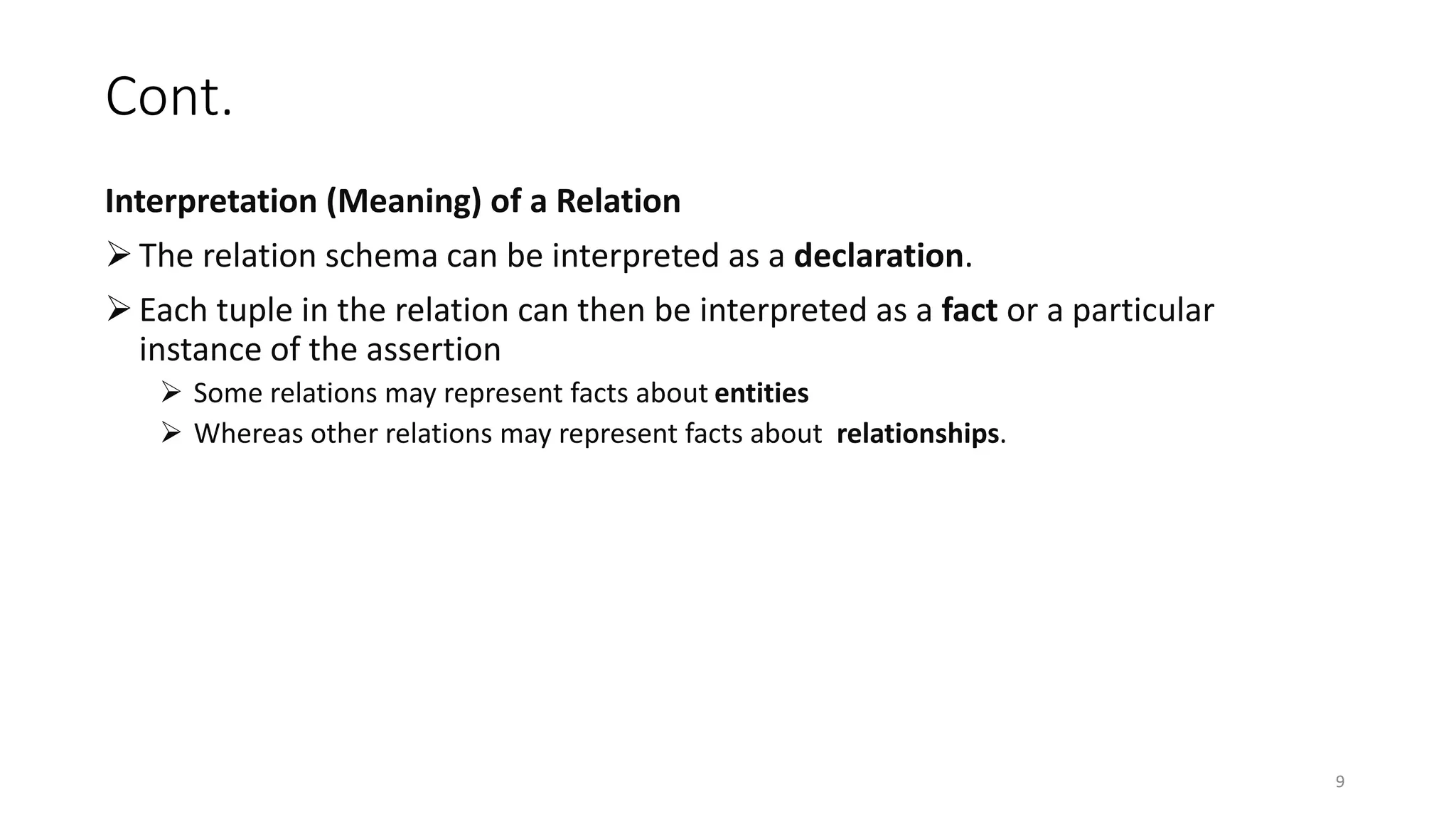
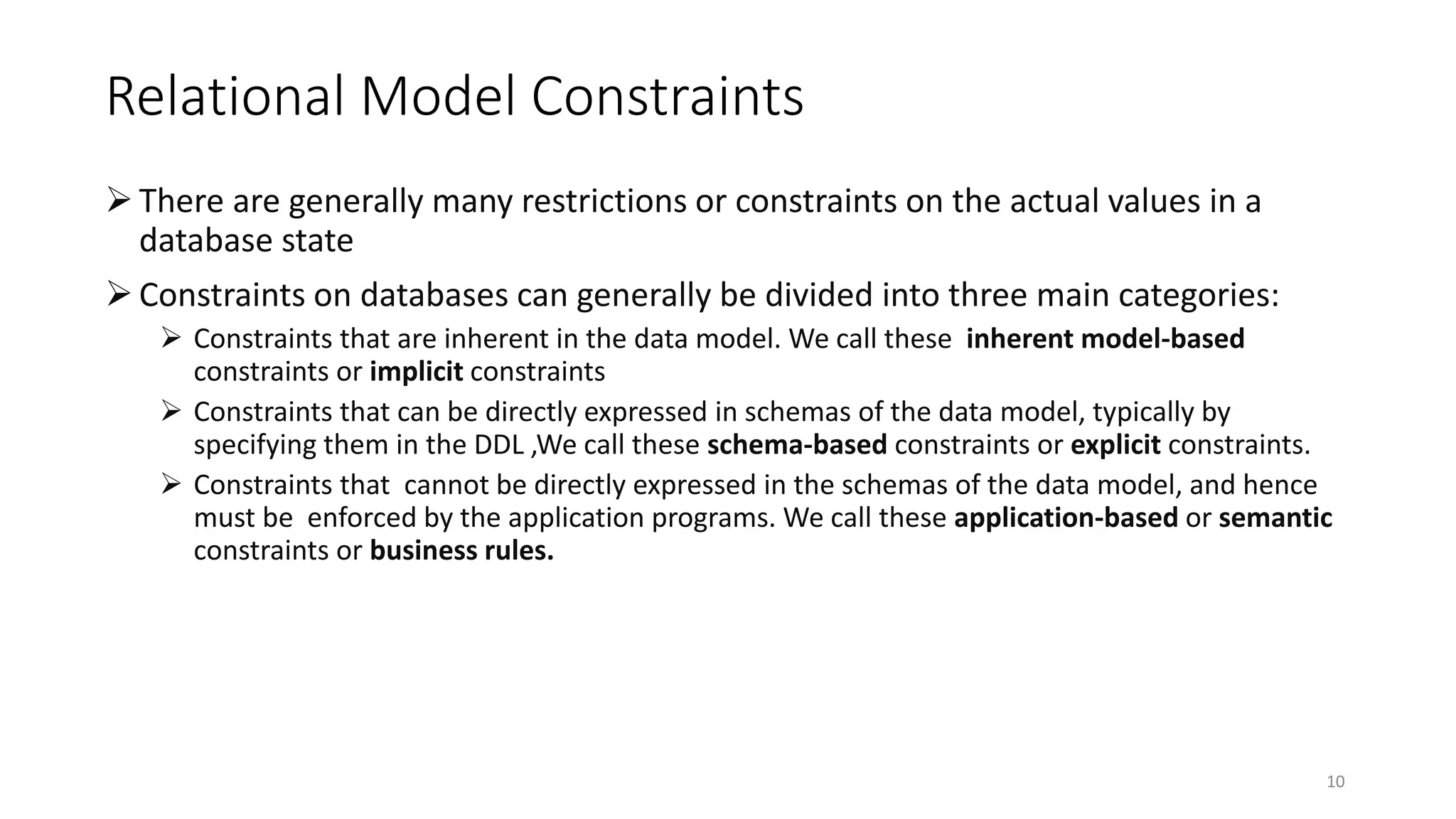
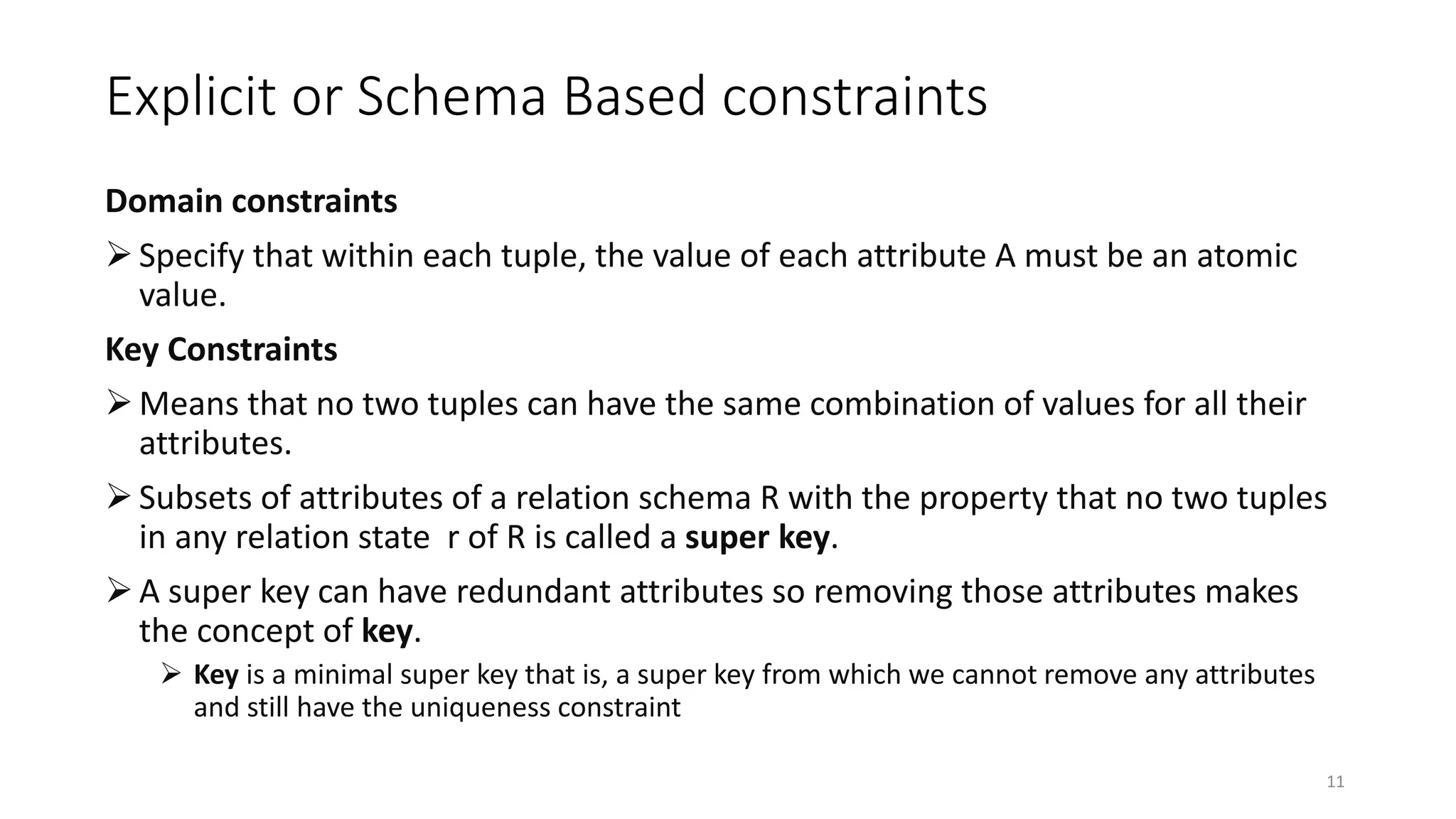
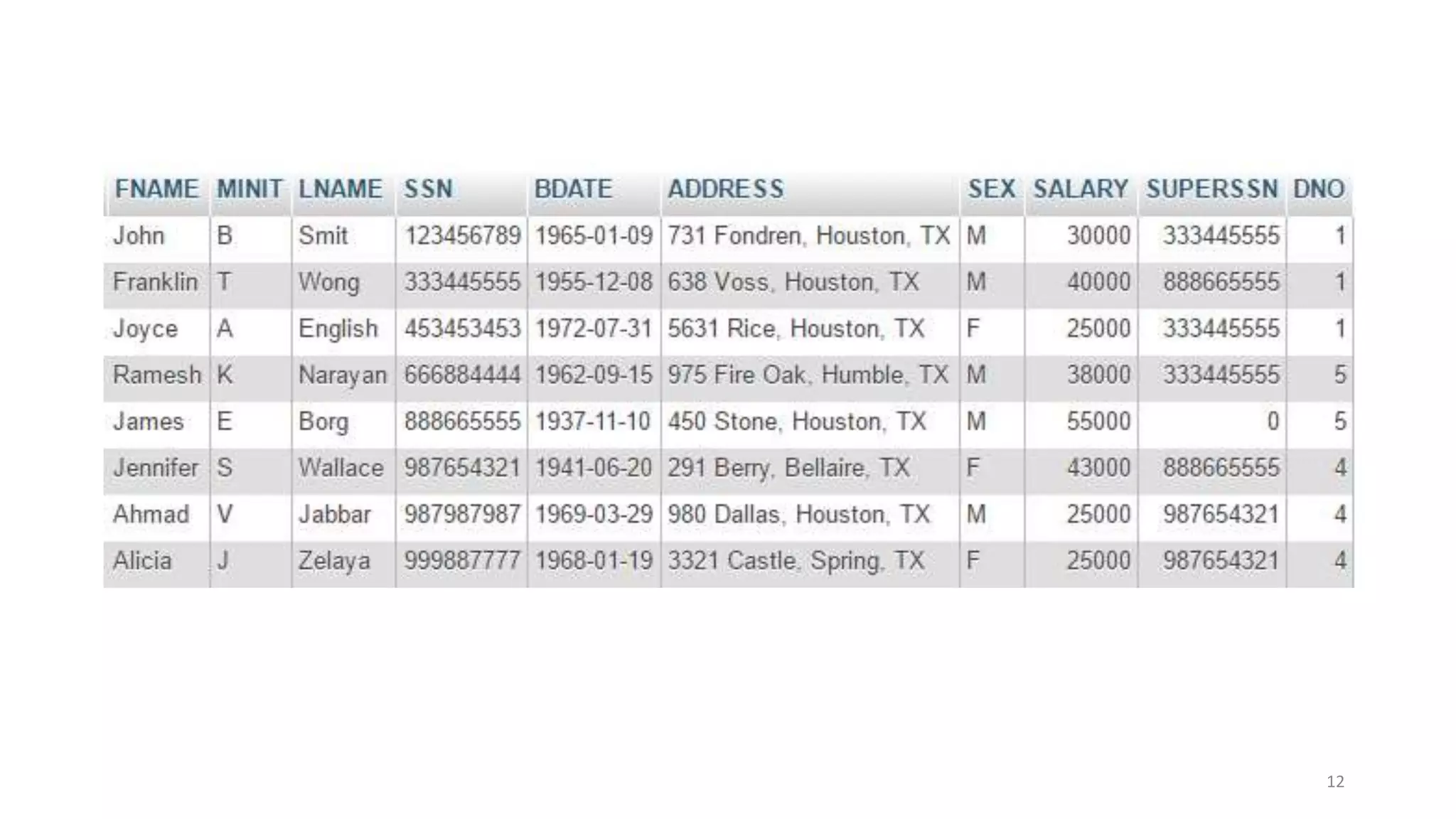
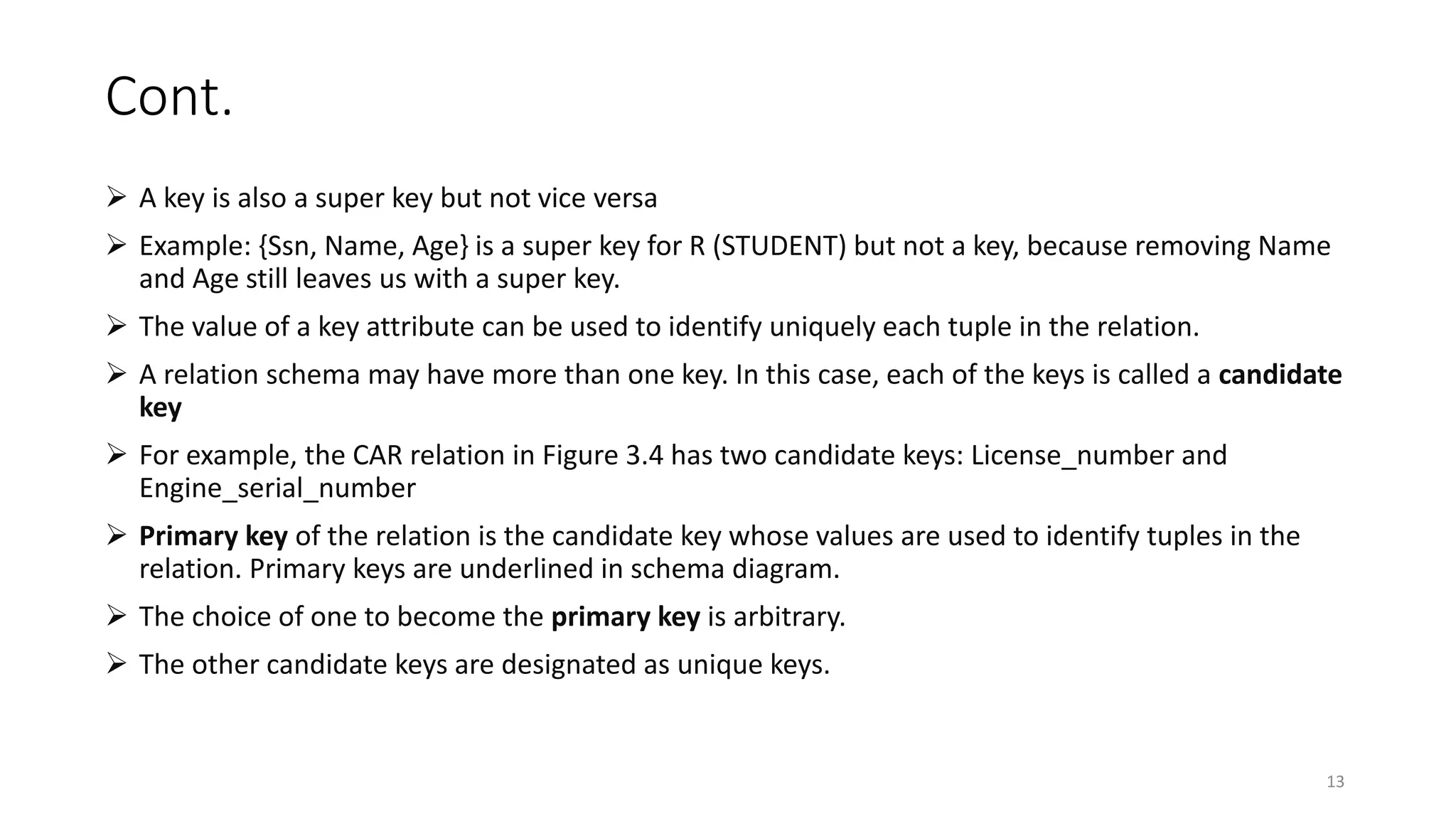
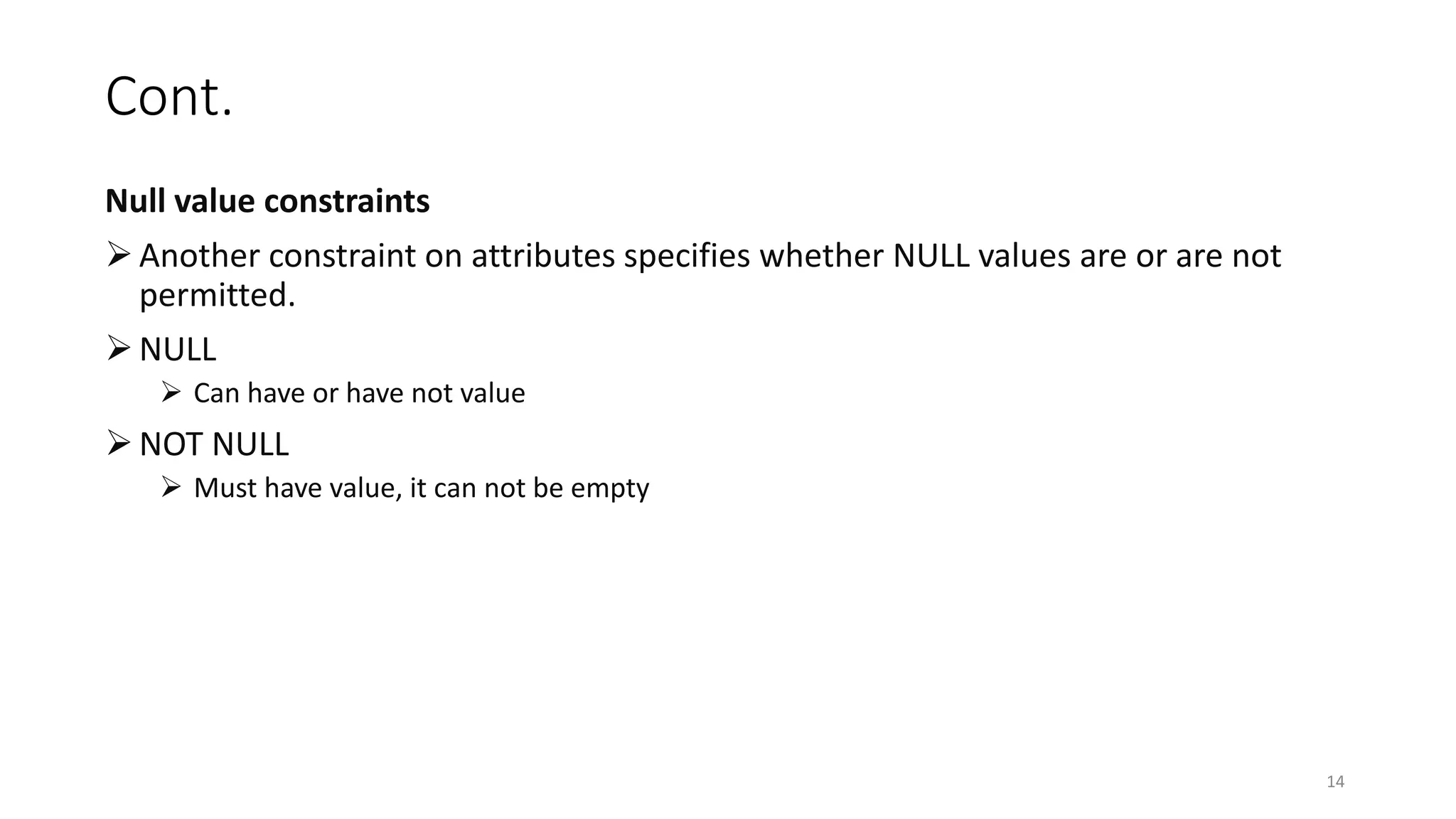
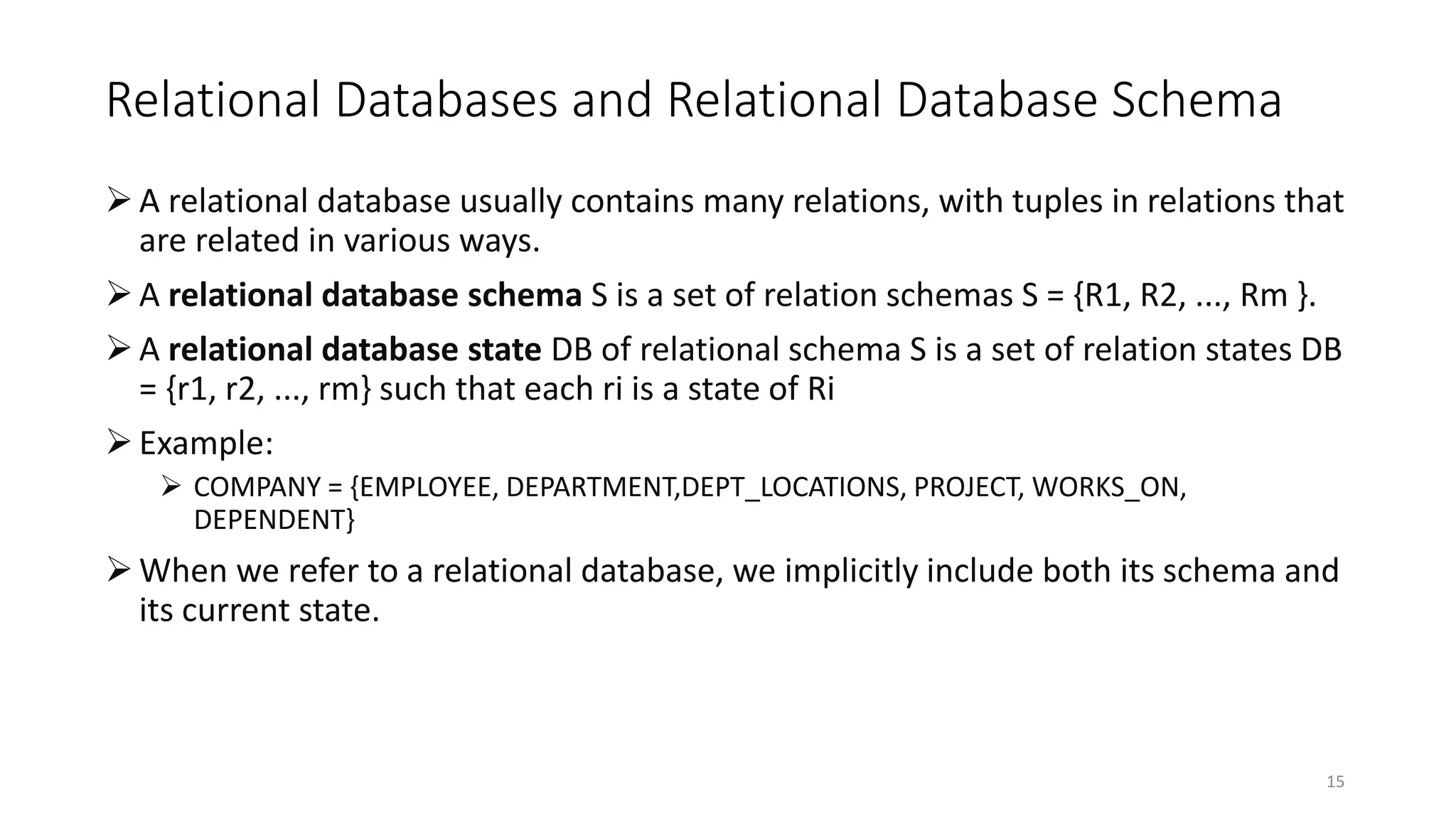
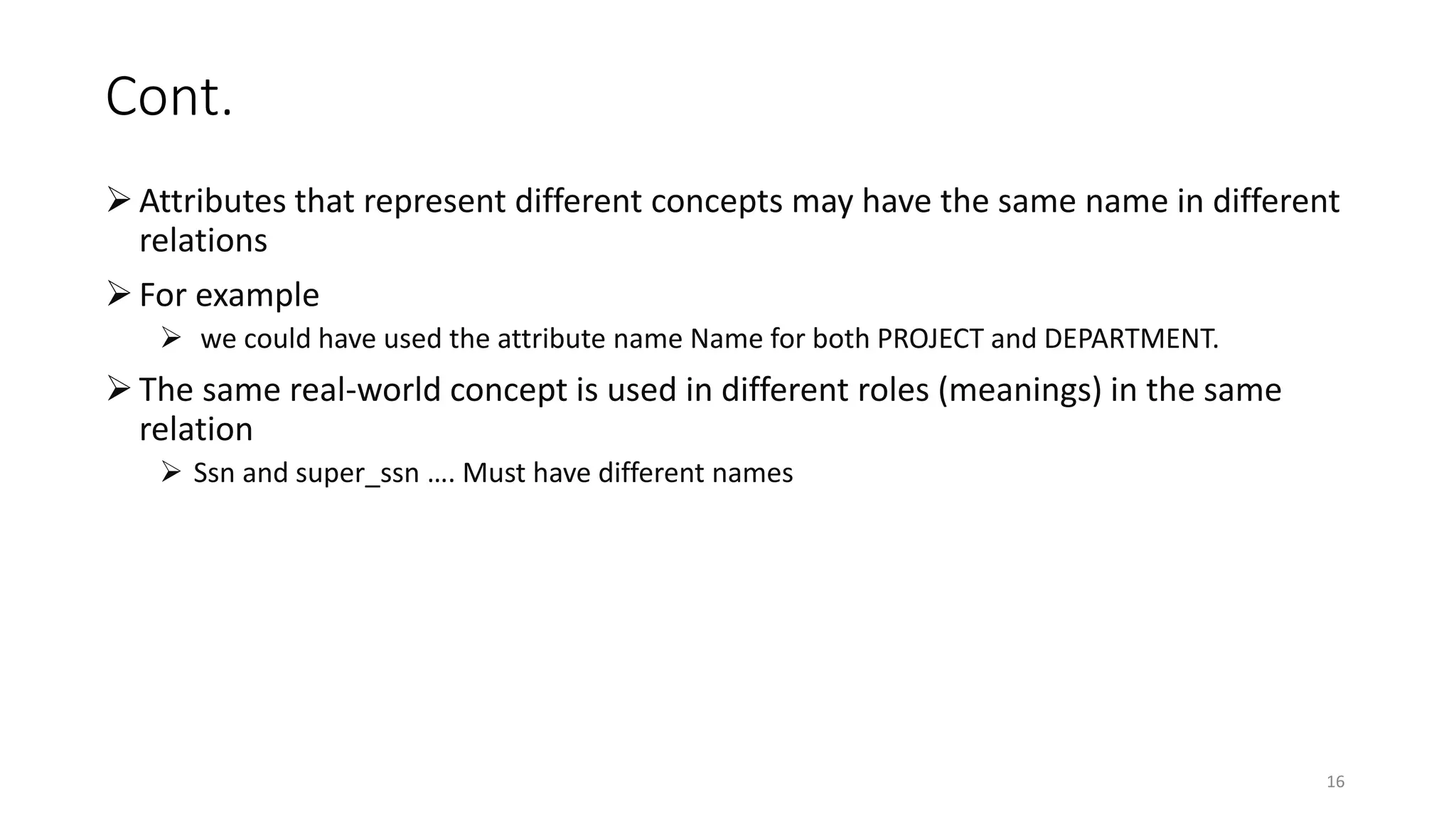
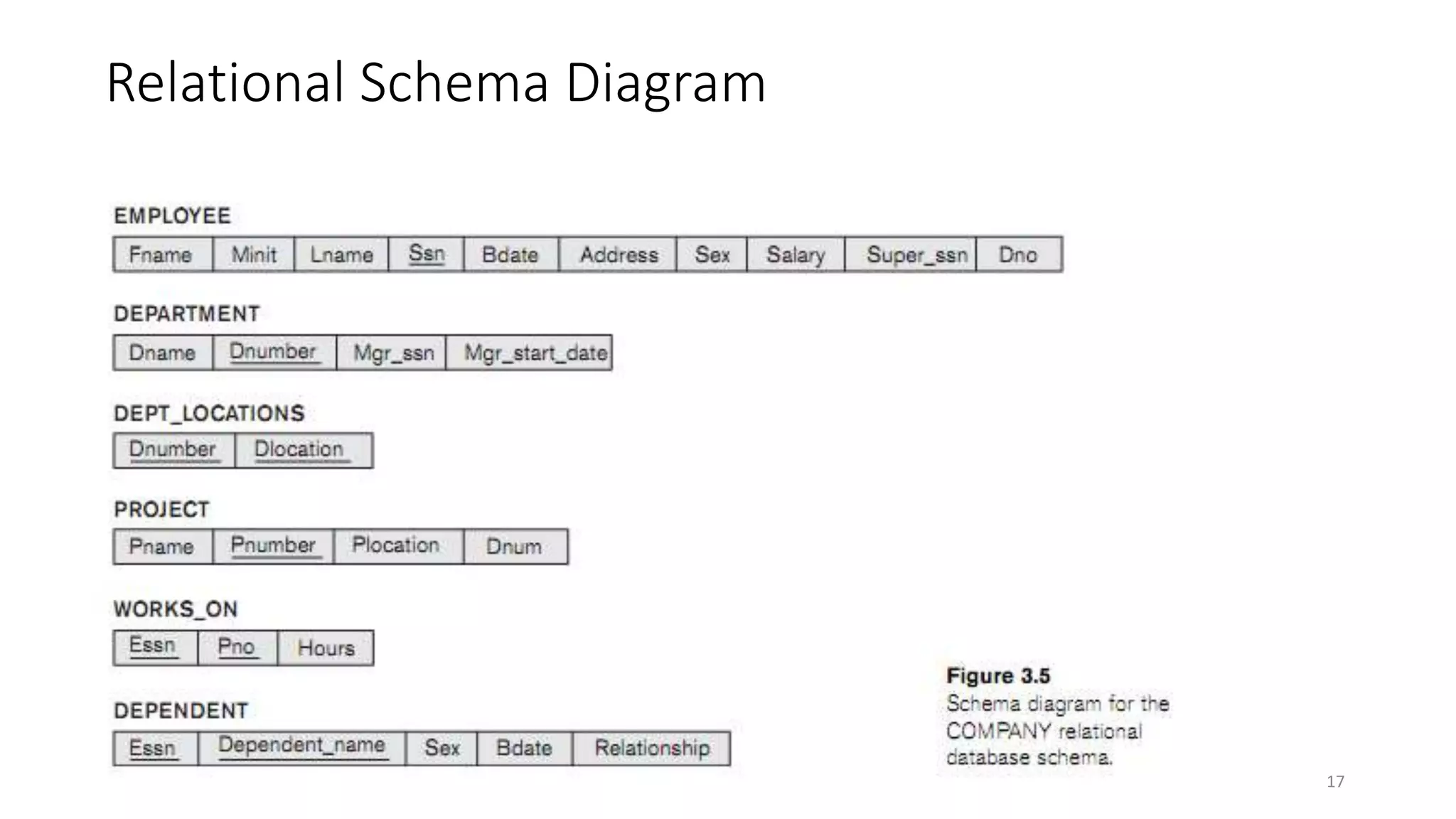

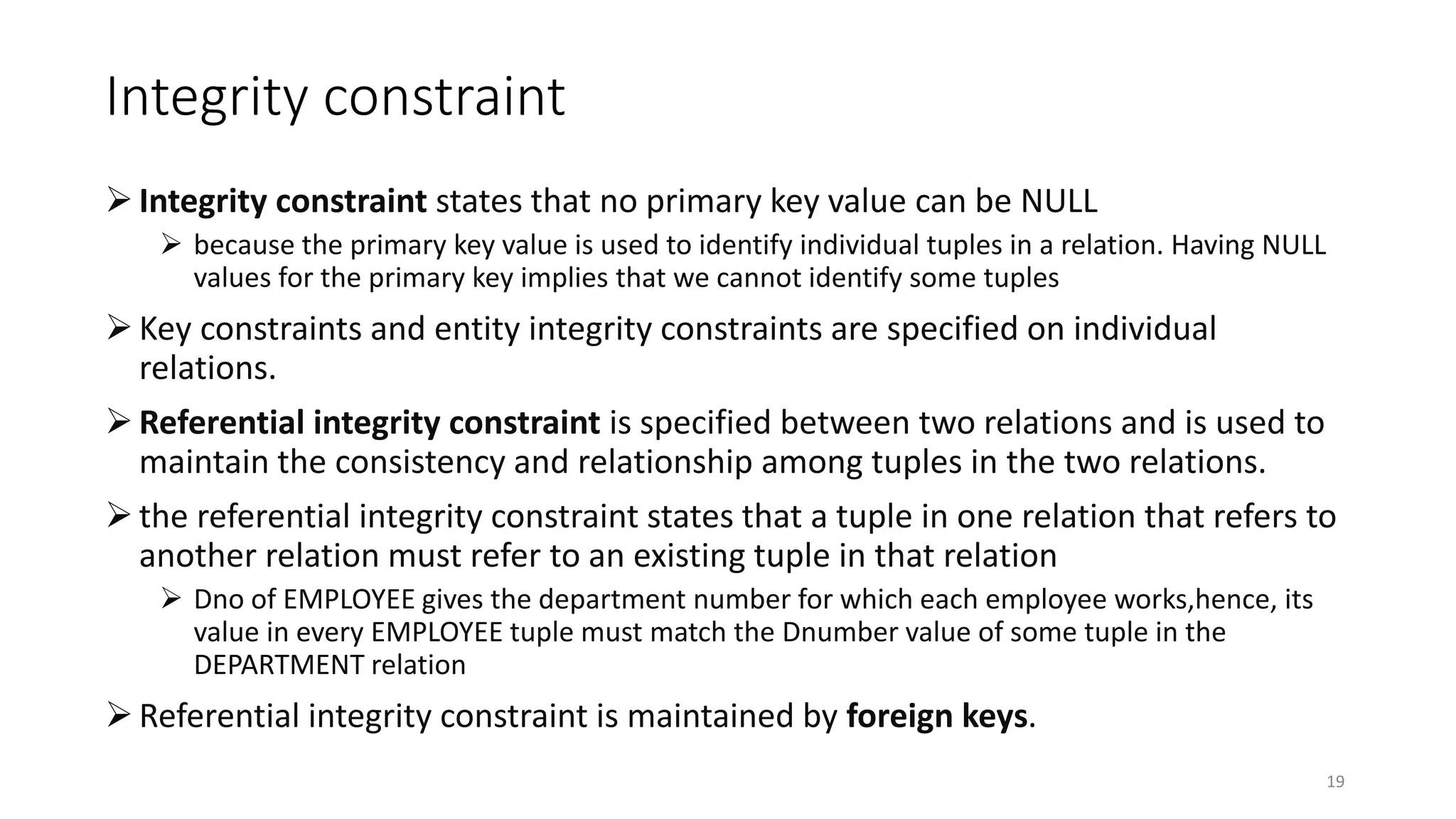
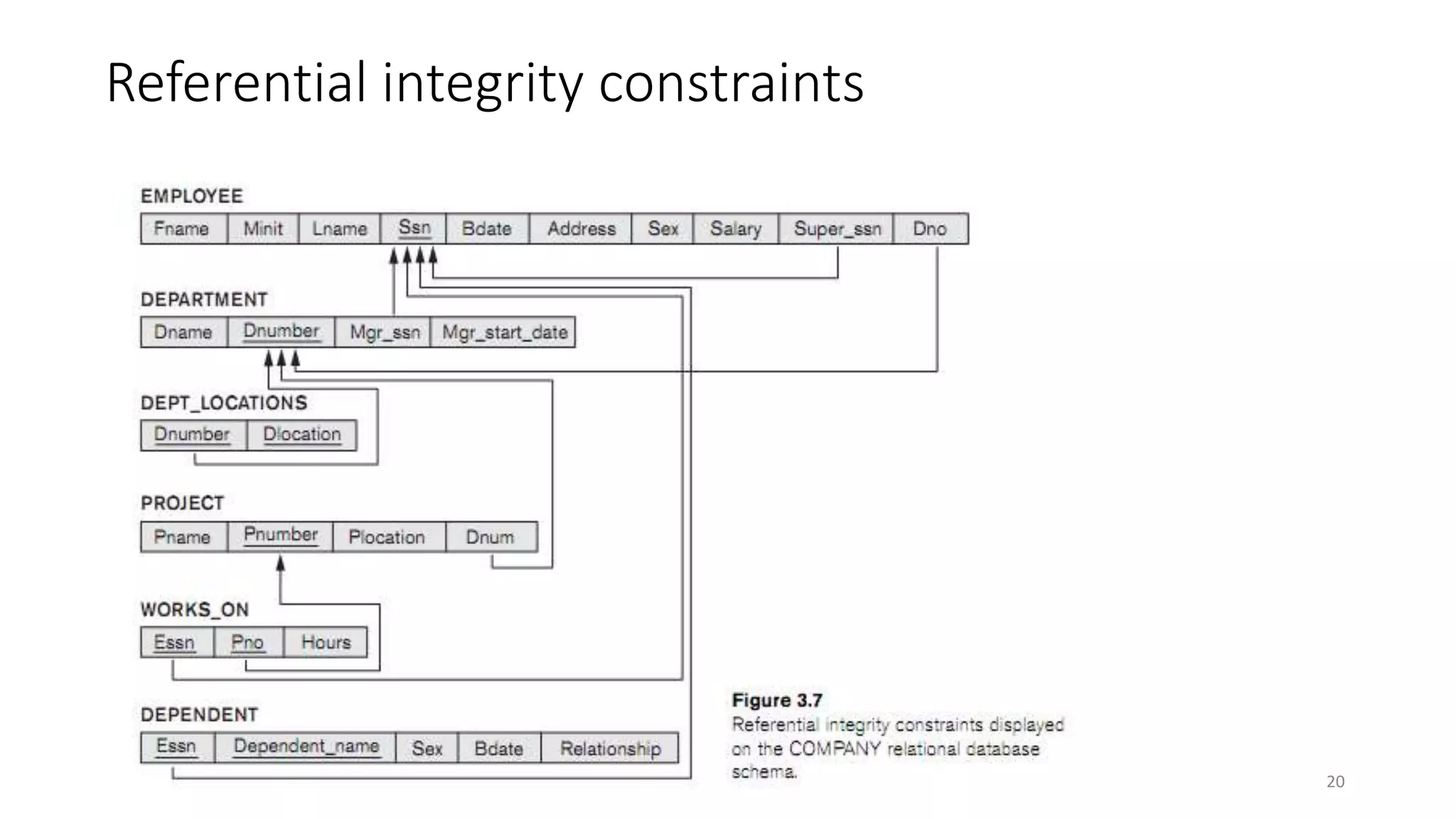
![Foreign key Specify a referential integrity constraint between the two relation schemas R1 and R2. A set of attributes FK in relation schema R1 is a foreign key of R1 that references relation R2 if it satisfies the following rules. The attributes in FK have the same domain(s) as the primary key attributes PK of R2. A value of FK in a tuple t1 of the current state r1(R1) either occurs as a value of PK for some tuple t2 in the current state r2(R2) or is NULL. In the former case, we have t1[FK] = t2[PK] R1 is called the referencing relation and R2 is the referenced relation. A foreign key could have NULL values when doesn’t related to other relation when it is not being used as primary key a foreign key can refer to its own relation 21](https://image.slidesharecdn.com/chapter-3-160714192443/75/Fundamentals-of-database-system-Relational-data-model-and-relational-database-constraints-21-2048.jpg)
